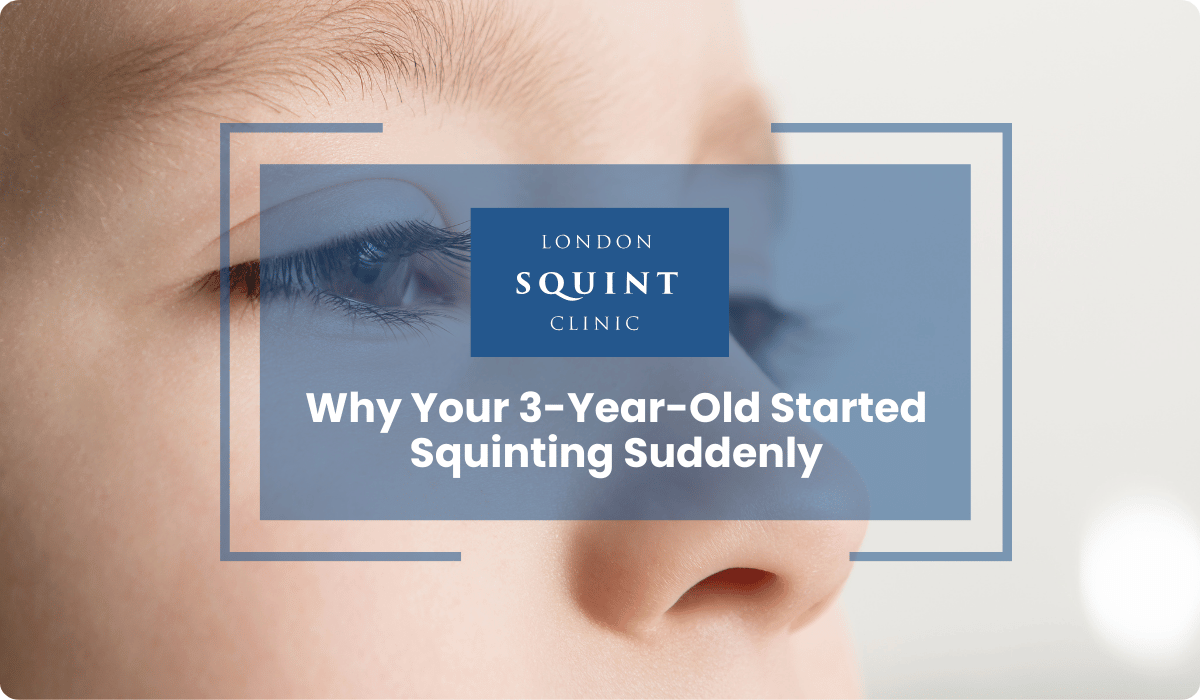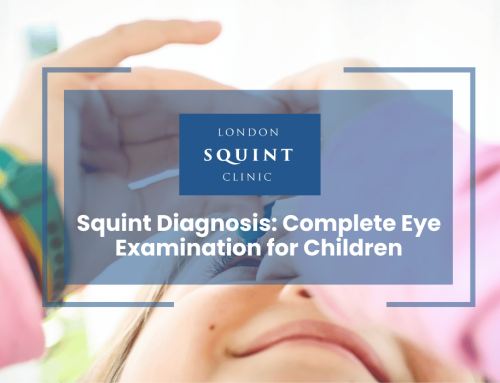Why Your 3-Year-Old Started Squinting Suddenly
Essential Insights for Parents: Sudden Squint in Toddlers
- A sudden squint (strabismus) in a 3-year-old is never normal and always warrants prompt medical attention to prevent permanent vision loss.
- Common causes include accommodative esotropia (related to long-sightedness), refractive errors, and eye muscle weakness, though rarely it can indicate serious neurological issues.
- Warning signs requiring immediate medical care include squint accompanied by headaches, vomiting, drowsiness, or pupil abnormalities.
- Early intervention is crucial as treatment is most effective during the critical period of visual development (before age 7-8).
- Treatment options range from corrective eyewear and patching therapy to vision exercises and, in some cases, surgical intervention.
- Preventive measures include regular vision screening, monitoring visual behavior, balanced screen time, and outdoor activities.
Table of Contents
- Understanding Sudden Squint Development in Toddlers
- Common Causes of Acquired Strabismus in 3-Year-Olds
- Warning Signs: When Is a Sudden Squint Serious?
- How Pediatric Ophthalmologists Diagnose Sudden Squint
- Treatment Options for Childhood Strabismus
- Should I Take My Child to the Doctor for Squinting?
- Preventing Vision Problems in Young Children
Understanding Sudden Squint Development in Toddlers
When a 3-year-old suddenly develops a squint (strabismus), it can be concerning for parents. Squinting refers to the misalignment of the eyes, where one eye turns inward, outward, upward, or downward while the other eye looks straight ahead. This condition, medically known as strabismus, affects approximately 4% of children under age 6 in the UK.
Toddler vision development is still ongoing at age 3, making this a critical period for visual function. The visual system, including eye coordination and binocular vision, continues to mature throughout early childhood. By age 3, most children have developed reasonably good visual acuity and coordination, which is why a sudden onset of squinting at this age warrants attention.
It’s important to understand that squints in children can be either congenital (present from birth) or acquired (developing later). A sudden squint in a 3-year-old represents an acquired form, which often has different underlying causes than congenital squints. While some intermittent squinting can be normal in very young infants as they develop visual coordination, a sudden onset in a 3-year-old is not part of typical development and requires proper assessment.
The timing of squint development provides important diagnostic clues. A squint appearing suddenly in a previously visually normal child might indicate an underlying issue that needs prompt attention, as early intervention during this critical period of visual development can significantly impact outcomes.
Common Causes of Acquired Strabismus in 3-Year-Olds
Several factors can contribute to the sudden development of a squint in a 3-year-old child. Understanding these causes can help parents recognise when to seek professional help.
Accommodative Esotropia: This is one of the most common causes of sudden squint in toddlers. It occurs when a child has uncorrected long-sightedness (hyperopia). When attempting to focus, the excessive effort triggers the eyes to turn inward. This type of squint often appears between ages 2-4 when children engage in more detailed visual tasks.
Refractive Errors: Significant uncorrected refractive errors, including astigmatism, myopia (short-sightedness), or hyperopia (long-sightedness) can lead to squinting. A 3-year-old may not complain about blurry vision but might develop a squint as the visual system attempts to compensate.
Eye Muscle Weakness: Certain conditions can weaken or affect the function of the eye muscles, resulting in misalignment. This includes conditions like cranial nerve palsies that control eye movement.
Viral Illnesses: Sometimes, a viral illness can temporarily affect the nerves controlling eye movements, leading to a sudden squint that may resolve as the child recovers.
Convergence Issues: Problems with the eyes’ ability to turn inward together when focusing on near objects can manifest as a squint, particularly during activities requiring close vision.
Trauma: Head injuries, even minor ones that might go unnoticed, can sometimes affect eye alignment and cause a sudden squint.
Less commonly, a sudden squint might indicate more serious conditions such as tumours or neurological disorders, though these are rare causes in otherwise healthy children. The pattern of the squint—whether it’s constant or intermittent, which direction the eye turns, and whether it affects one or alternates between both eyes—provides valuable diagnostic information for healthcare professionals.
Warning Signs: When Is a Sudden Squint Serious?
While any sudden squint in a 3-year-old warrants medical attention, certain warning signs indicate a potentially more serious condition requiring urgent assessment. Being aware of these red flags can help parents determine the appropriate level of urgency.
Accompanying Symptoms: A sudden squint accompanied by headaches, vomiting, unusual drowsiness, or changes in behaviour requires immediate medical attention. These symptoms could indicate increased intracranial pressure or neurological issues.
Recent Head Trauma: If the squint develops following a head injury, even if the injury seemed minor, seek prompt medical care as this could indicate damage to cranial nerves or brain structures controlling eye movement.
Double Vision: Though difficult for a 3-year-old to articulate, signs that your child is seeing double (diplopia) might include closing or covering one eye, tilting their head in unusual positions, or showing sudden clumsiness. Double vision with a sudden squint can indicate a serious neurological issue.
Pupil Abnormalities: If you notice differences in pupil size or reaction to light alongside the squint, this requires urgent assessment.
Rapid Progression: A squint that worsens significantly over hours or days rather than weeks is concerning and warrants prompt evaluation.
Even without these warning signs, any sudden squint poses a risk for developing amblyopia (lazy eye). When one eye turns, the brain may begin to ignore visual input from that eye to avoid double vision. This adaptation can lead to permanent vision loss in the affected eye if not addressed promptly. The critical period for visual development continues through early childhood, making early intervention essential for preserving vision.
Remember that sudden development of a lazy eye in a child often relates to an underlying squint and requires comprehensive assessment by a specialist.
How Pediatric Ophthalmologists Diagnose Sudden Squint
When a 3-year-old develops a sudden squint, a thorough diagnostic process helps identify the underlying cause and determine appropriate treatment. Pediatric ophthalmologists use specialised techniques designed for young children who may not be able to fully cooperate with standard eye examinations.
Comprehensive History: The assessment begins with detailed questions about when the squint was first noticed, whether it’s constant or intermittent, and if there are any associated symptoms or recent illnesses. Family history is important, as some eye conditions have genetic components.
Visual Acuity Testing: For 3-year-olds, age-appropriate methods like picture charts or letter-matching games help assess vision in each eye separately. This identifies any significant difference in vision between the eyes that might contribute to the squint.
Refraction Assessment: After using eye drops to temporarily relax the focusing muscles (cycloplegia), the ophthalmologist measures any refractive errors. This crucial step often reveals previously undetected long-sightedness that may be causing accommodative esotropia.
Ocular Alignment Tests: Several tests evaluate eye alignment and movement:
- Cover tests, where one eye is covered while observing the other eye’s movement
- Hirschberg test, which examines light reflections on the corneas
- Prism tests to measure the angle of misalignment
Eye Movement Examination: The doctor assesses how well the child’s eyes move in different directions to identify any muscle weakness or nerve problems.
Binocular Vision Assessment: Tests evaluate how well the eyes work together and whether the child has developed suppression (ignoring vision from one eye) or amblyopia.
Dilated Fundus Examination: The ophthalmologist examines the retina and optic nerve to rule out any structural abnormalities that might be causing or contributing to the squint.
In some cases, additional imaging such as MRI might be recommended if there are concerns about neurological causes, though this is uncommon for typical childhood strabismus presentations.
Treatment Options for Childhood Strabismus
Treatment for a sudden squint in a 3-year-old depends on the underlying cause, the type of squint, and whether amblyopia (lazy eye) has developed. Early intervention is crucial during this critical period of visual development. Treatment approaches typically follow a stepwise pattern, beginning with non-surgical options when appropriate.
Corrective Eyewear: If the squint is related to refractive errors, particularly accommodative esotropia caused by long-sightedness, prescription glasses are often the first-line treatment. Many children show significant improvement in eye alignment once their refractive error is corrected. These glasses must be worn consistently to maintain proper alignment.
Amblyopia Treatment: If the squint has led to reduced vision in one eye (amblyopia), treatment focuses on strengthening the weaker eye. This typically involves eye patching treatment, where the stronger eye is covered for prescribed periods, forcing the brain to process visual information from the weaker eye. Alternative approaches include atropine eye drops that temporarily blur vision in the stronger eye.
Vision Therapy for Children: Specific eye exercises may help improve binocular vision, eye coordination, and depth perception. These exercises are particularly useful for convergence insufficiency and certain types of intermittent squints.
Prism Lenses: In some cases, special prism lenses incorporated into glasses can help align images for both eyes, reducing double vision and improving binocular function.
Surgical Intervention: If non-surgical approaches are insufficient, squint surgery may be recommended. This procedure adjusts the tension of the eye muscles to improve alignment. Surgery is typically considered when:
- The squint is large in angle
- Glasses alone don’t correct the alignment
- The squint is constant rather than intermittent
- There’s significant risk to binocular vision development
Botulinum Toxin (Botox): In some cases, Botox injections into specific eye muscles can temporarily weaken them, helping to realign the eyes. This approach may be used diagnostically or therapeutically in certain situations.
Most children require a combination of treatments, and the approach often evolves as the child responds to initial interventions. Regular follow-up appointments are essential to monitor progress and adjust treatment as needed.
Should I Take My Child to the Doctor for Squinting?
If you notice your 3-year-old has suddenly developed a squint, the answer is unequivocally yes—you should consult a healthcare professional promptly. Early intervention is crucial for several important reasons.
Preventing Vision Loss: A sudden squint can quickly lead to amblyopia (lazy eye) if left untreated. When one eye turns, the brain may begin suppressing the image from that eye to avoid double vision. This suppression, if allowed to continue during the critical period of visual development, can result in permanent vision reduction in the affected eye.
Identifying Underlying Causes: A sudden squint may be a symptom of an underlying condition that requires treatment. While most causes are benign and treatable, such as uncorrected refractive errors, occasionally a squint can indicate more serious conditions that need prompt attention.
Optimal Treatment Timing: The visual system remains plastic and responsive to treatment in young children. Interventions for squint and associated vision problems are most effective when initiated early, ideally before age 7-8 years, with even better outcomes when started at age 3-4.
Referral Pathway: The typical route involves first consulting your GP or health visitor, who can provide an initial assessment and refer to the appropriate specialist. A pediatric ophthalmologist or orthoptist specialises in childhood eye conditions and can provide comprehensive evaluation and treatment.
What to Expect: During the initial appointment, be prepared to discuss:
- When you first noticed the squint
- Whether it’s constant or comes and goes
- Any situations that seem to make it better or worse
- Any other symptoms your child has experienced
- Family history of eye conditions
Remember that many parents worry about whether their child will cooperate during eye examinations. Pediatric eye specialists are skilled at examining young children and use child-friendly techniques to obtain the necessary information, even with reluctant toddlers.
Preventing Vision Problems in Young Children
While not all causes of sudden squint in 3-year-olds are preventable, several strategies can help maintain healthy vision development and identify potential problems early.
Regular Vision Screening: The UK National Screening Committee recommends vision screening for all children aged 4-5 years. However, if you have concerns about your child’s vision before this age, don’t wait for scheduled screening. Request an assessment from your GP or health visitor who can refer to appropriate specialists if needed.
Monitor Visual Behaviour: Be attentive to signs that might indicate vision problems in your toddler, such as:
- Sitting very close to screens or books
- Tilting the head or covering one eye when focusing
- Excessive blinking or eye rubbing
- Poor depth perception or clumsiness
- Sensitivity to light
Balanced Screen Time: While digital devices are part of modern childhood, excessive screen time may contribute to visual fatigue and potentially exacerbate existing vision issues. Follow age-appropriate guidelines for screen time and ensure regular breaks using the 20-20-20 rule: every 20 minutes, look at something 20 feet away for 20 seconds.
Outdoor Activities: Research suggests that spending time outdoors may help prevent or slow the progression of myopia (short-sightedness). Aim for at least 1-2 hours of outdoor play daily when possible.
Balanced Diet: Nutrition plays a role in eye health. Ensure your child’s diet includes foods rich in vitamins A, C, and E, as well as omega-3 fatty acids and zinc, which support healthy vision development.
Protect Eyes from Injury: Use appropriate eye protection during sports and activities that pose risks to the eyes. Even minor eye injuries can sometimes affect eye alignment.
Know Your Family History: Be aware of any family history of childhood eye conditions, including squint, refractive errors, or amblyopia, as many vision issues have genetic components. Share this information with your child’s healthcare providers.
Remember that while these preventive measures are valuable, they cannot guarantee prevention of all eye conditions. The most important preventive strategy remains vigilant observation and prompt professional assessment when concerns arise.
Frequently Asked Questions
Can a squint in a 3-year-old go away on its own?
Most sudden squints in 3-year-olds will not resolve without treatment. While some intermittent squints in very young infants can improve naturally as visual development progresses, a sudden squint appearing at age 3 typically indicates an underlying issue requiring intervention. Accommodative esotropia (inward turning eye due to uncorrected long-sightedness) is a common cause at this age and requires prescription glasses. Delaying treatment increases the risk of developing amblyopia (lazy eye) and permanent vision impairment.
How urgent is it to see a doctor for a child’s sudden squint?
A sudden squint in a 3-year-old should be evaluated within days, not weeks. While not usually an emergency unless accompanied by symptoms like headaches, vomiting, or drowsiness, prompt assessment is essential because:
- The critical period for visual development is ongoing
- Amblyopia can develop quickly when a squint is present
- Earlier treatment typically leads to better outcomes
- Occasionally, a sudden squint may indicate a more serious underlying condition
Contact your GP for an urgent referral to a pediatric ophthalmologist or orthoptist.
What is the success rate of treatment for childhood squint?
Treatment success rates for childhood squint are generally high, especially when intervention begins early. Approximately 70-80% of accommodative squints (the most common type in 3-year-olds) show significant improvement with glasses alone. For children requiring surgery, success rates range from 60-80% for achieving acceptable alignment with a single procedure, with additional procedures sometimes needed for optimal results. The prognosis for developing normal binocular vision depends on the type of squint, age at onset, duration before treatment, and consistency of treatment adherence.
Will my child need to wear glasses forever if diagnosed with a squint?
Whether a child will need glasses long-term depends on the underlying cause of the squint. For accommodative esotropia caused by long-sightedness, many children do require glasses throughout childhood. Some may gradually reduce their dependence as they grow, particularly during adolescence when eye development completes. However, others will continue to need vision correction into adulthood. Regular follow-up appointments allow the prescription to be adjusted as the child’s visual system develops. Removing prescribed glasses prematurely often results in the squint returning.
How can I tell if my child has developed a lazy eye from squinting?
Parents cannot reliably detect amblyopia (lazy eye) through observation alone, as children rarely complain about vision problems and can function surprisingly well even with reduced vision in one eye. Potential signs include:
- Noticeably favoring one eye
- Tilting the head consistently to one side
- Closing one eye in bright light
- Poor depth perception (difficulty catching balls or navigating steps)
- Squinting or closing one eye when concentrating
Only a professional eye examination can definitively diagnose amblyopia, which is why prompt assessment of any squint is essential.
Is squint surgery painful for children?
Squint surgery is performed under general anesthesia, so children do not experience pain during the procedure. Post-operative discomfort is typically mild to moderate and manageable with standard children’s pain relievers. Most children experience some redness, grittiness, and watering of the eye for 1-2 weeks after surgery. The eyes may feel scratchy rather than severely painful. Recovery is usually quick, with most children returning to normal activities within a few days, though swimming should be avoided for 2-4 weeks. Modern surgical techniques minimize tissue disruption, resulting in faster healing and less discomfort than in the past.
Can screen time cause a sudden squint in toddlers?
Excessive screen time alone does not directly cause a sudden squint in 3-year-olds, but it may reveal or exacerbate underlying vision issues. Prolonged close focus required for screen use can unmask latent hyperopia (long-sightedness) or convergence problems, making a previously unnoticed squint more apparent. Screen time can also contribute to visual fatigue, which may temporarily worsen eye alignment issues. While limiting screen time according to age-appropriate guidelines is recommended for overall eye health, a sudden squint requires professional evaluation regardless of screen habits, as it typically indicates an underlying vision or eye muscle coordination problem.
Find out if you are suitable for Double Vision Treatment
Not everyone is eligible for double vision surgery.
Find out if you could benefit from this life-changing surgery by taking the quick self-suitability quiz below:
Our most popular procedures

Hello, I’m Nadeem Ali
I’m one of the few eye surgeons in the world with 100% focus on Squint and Double Vision Surgery.
I have 24 years of eye surgery experience, and worked for 13 years as a Consultant at London’s renowned Moorfields Eye Hospital.
In 2023, I left the NHS to focus fully on treating patients from across the world at the London Squint Clinic. You can read more about me here.
There’s lots of information on the website about: squint surgery, double vision surgery and our pricing.
The most rewarding part of my job is hearing patients tell me how squint or double vision surgery has changed their lives. You can hear these stories here.
Mr Nadeem Ali
MA MB BChir MRCOphth FRCSEd(Ophth)





